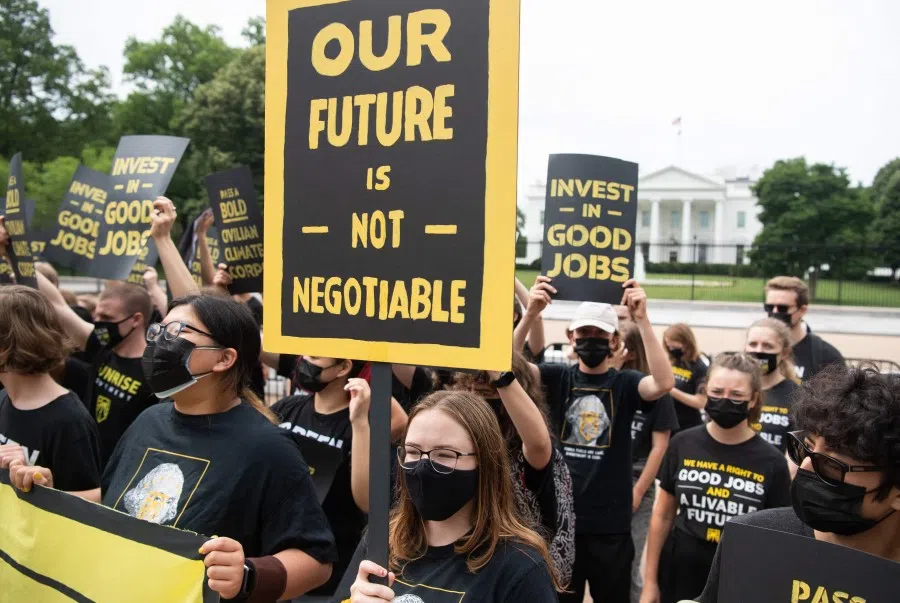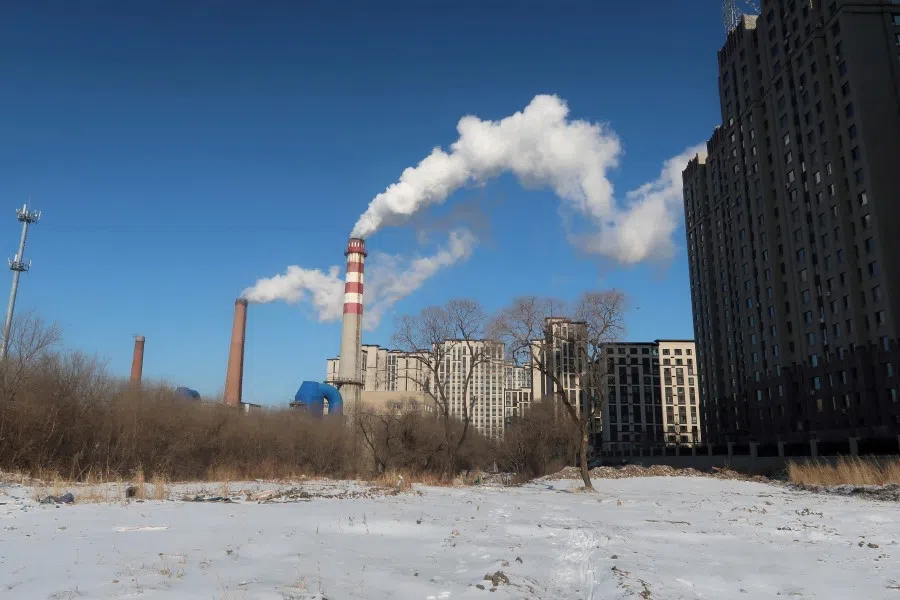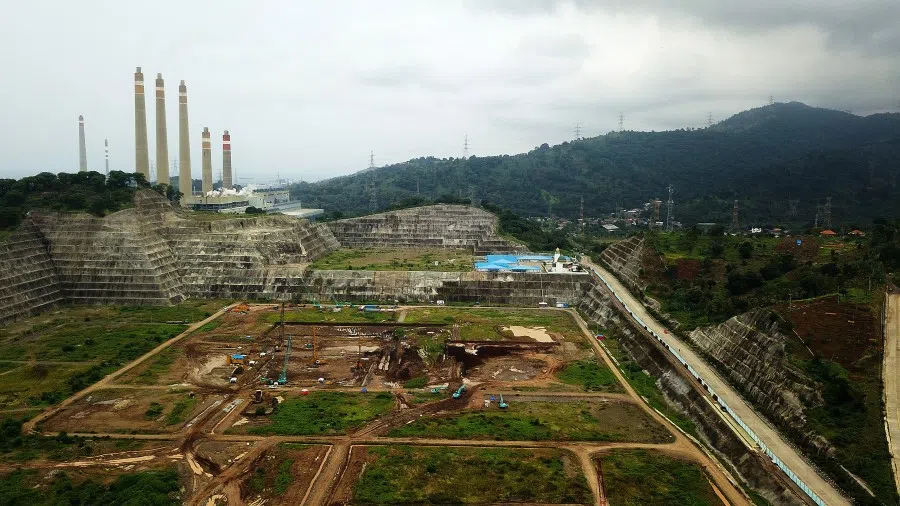US-China competition in climate cooperation a good thing for Southeast Asia
The US is back in the international climate cooperation game, but the influence it will have remains to be seen. Its passing of a new omnibus package which includes major energy provisions to address climate change provides hope that partisan divides are not insurmountable. On China's part, its 14th Five-Year Plan demonstrates strong impetus to tackle climate change issues. As for ASEAN, the ASEAN-China Strategy on Environmental Cooperation papers has enabled cooperation with China to progress well, but cooperation with the US can be improved with an institutional framework to bring climate cooperation to a higher level.

Tensions between the US and China which started with a trade war, complicated by a global pandemic, and compounded by a global economic recession, are revealing ever sharper and deeper rivalries. The tit-for-tat actions that the US and China have engaged in over the South China Sea, closure of consulates, banning of WeChat, and the order to sell TikTok have fuelled speculations of this being a "new Cold War". The Biden Administration has not minced its words when it comes to competition and cooperation with China. While President Joe Biden has said that working together with other nations to meet new global challenges is needed, he also said that the US is in competition with China to "win the 21st century". Southeast Asia, the theatre of great power rivalries, depends on the smooth functioning of this relationship for regional stability.
If the US and China work together
China's announcement of a 2060 carbon neutrality target in September 2020 and the US re-joining the Paris Agreement in January 2021 have kindled hopes of cooperation between the two powers. While climate change has been identified as one key area of cooperation between the US and China, the US is seeking "standalone" cooperation on climate change issues, whereas China has made clear that it objects to "selective multilateralism".
But the appointment of Xie Zhenhua, China's former chief climate negotiator in 2015, and John Kerry, the US' former Secretary of State, as special climate envoy by the respective governments is a positive sign that despite the rhetoric, cooperation will advance. The two diplomats enjoy good rapport and are seen as capable of competing but also cooperating with each other. So far, the two countries have committed to co-chairing a G20 study group on climate-related financial risks. It remains to be seen if more cooperation will be announced in the lead-up to COP26 in Glasgow.
Should the US embark and remain on a carbon neutral pathway and with cooperation chiefly from China and other developed countries, analysts expect that the target of holding temperature increases to well below 2 degrees Celsius, the stated goal of the Paris Agreement, would be achievable.
The US accounts for 14.5% of the world's total greenhouse gas (GHG) emissions while China accounts for 27.92%. Together, the world's two largest economies account for over 40% of global GHG emissions (IEA, 2019). If the two powers are successful in implementing their national mitigation targets by mid-century and manage to cooperate in the development and deployment of advanced technologies, the world's chances of slowing down global warming will improve drastically.
Should the US embark and remain on a carbon neutral pathway and with cooperation chiefly from China and other developed countries, analysts expect that the target of holding temperature increases to well below 2 degrees Celsius, the stated goal of the Paris Agreement, would be achievable.
Can the US and China meet their targets?
President Joe Biden signed executive orders for sweeping climate action in January 2021. He made climate policy central to national security decisions, putting in place plans for nationwide electric vehicle (EV) charging stations, and revitalising employment through wind, solar and energy infrastructure growth, among other matters. This was in contrast to the Trump Administration that rescinded some 100 environmental regulations. If left untouched, these deregulatory actions are estimated to significantly increase GHG emissions over the next decade. The Biden administration has promised to reinstate more than 100 of these regulations over the next two to three years. Beyond just reinstating regulations, the US also needs to embark on a deep decarbonisation drive to put itself onto a zero-carbon pathway.

The US released its revised Nationally Determined Contribution (NDC) on 22 April 2021, the same day that President Biden hosted a Climate Leaders' Summit. The US's NDC commits to a reduction of 50-52% GHG emissions from 2005 levels by 2030, and is meant to propel greater global climate ambitions and actions among other major economies. The new pledge represents a significant and deeper cut from the previous pledge of 26-28% by 2025, and has quickened the pace of reduction by 30%.
Biden has also pledged to double US spending towards international climate finance, raising it to US$5.7 billion by 2024, pending Congress approval. The preliminary assessment of NDC targets is that they are achievable, provided that the Administration drives a "whole-of-government" approach involving all levels of the federal government, with massive investments in green technology and infrastructure, and building upon existing and new legislation that limit other GHG emissions such as hydrofluorocarbons (HFCs).
However, the history of bipartisan support for climate legislation in the US Congress and Senate has not been easy. It has been extremely difficult particularly in the last four years of the Trump Administration with efforts led by the Democrats blocked at different levels of government. There now appears to be some evidence of the possible bipartisan cooperation to address climate change with the passing of an omnibus package that included significant energy provisions, such as the limits of HFCs in December 2020.
To ease reliance on coal, China will have to reach a 16-fold increase in solar, 9-fold increase in wind, 6-fold increase in nuclear and double hydropower electricity. Even with all these combined efforts, fossil fuels would still account for 16% of China's total energy consumption.
On the other side of the Pacific, President Xi Jinping announced in September 2020 that China will peak its emissions by 2030 and reach carbon neutrality by 2060, ten years later than the Paris Agreement's stated year. To reach its 2060 target, China has to aggressively scale back on fossil fuel usage for its electricity demand.
According to the latest IEA data released in November 2020, China's energy mix is made up of coal (66%), renewables (26%), nuclear (5%) and gas (3%). China's energy mix proportions do not change drastically month-on-month. Data shows that China's CO2 emission is still on a steep upward trajectory with few year-on-year decreases since 1960. Xi promised at the Climate Leaders' Summit to "strictly limit" increases in China's coal consumption between 2026 and 2030 and control coal-fired power generation projects. In its 14th Five-Year Plan, one of China's stated goals is to "promote the proportion of non-fossil energy in total energy consumption to about 20%".
Is China's 2060 target achievable? According to new research by Tsinghua University's Institute of Climate Change and Sustainable Development, there are different possible pathways that China can embark on to reach its 2060 carbon neutrality target. A combination of aggressive growth in renewable energy production, use of carbon offsets, increase in carbon sinks and use of carbon capture, utilisation and sequestration (CCUS) technologies and the application of hydrogen energy in the industrial, transport and power sectors are among the suggestions.
China's electricity production will have to transition to clean energy sources; this will require massive investments in renewable electricity over the next 40 years. To ease reliance on coal, China will have to reach a 16-fold increase in solar, a nine-fold increase in wind, and a six-fold increase in nuclear and double hydropower electricity. Even with all these combined efforts, fossil fuels would still account for 16% of China's total energy consumption. Hence, a viable and large-scale deployment of CCUS and direct carbon capture technologies is needed. China has made some progress so far and is piloting the highest number of CCUS projects in the world. However, large-scale deployment has not come about, and is assessed to be possible only with international collaboration.

In March 2021, China released its 14th Five Year Plan (FYP), a national plan that charts its economic development; it confirms the elements of President Xi Jinping's 2060 carbon neutrality pledge made in September 2020. Briefly, the FYP outlines climate-related targets such as:
• Reduction of carbon emissions intensity by 18% from 2020 levels • Reduction of energy intensity by 13.5% from 2020 levels • Increase in clean energy by 20% in national energy mix • Nuclear generation reaching 70GW by 2025 • Comprehensive energy production capacity reaching more than 4.6 billion TCE • Increase in forest cover from 23.2% to 24.1%
Unlike the rest of the world's economies that have faced massive economic contractions due to Covid-19 in 2020, China's Gross Domestic Product (GDP) grew 2.3% with a year-on-year GDP expansion of 6.5% in the fourth quarter of last year. Economic predictions are that China will see an 8.4% GDP expansion in 2021. This provides some perspective to the rate of China's economic growth. The current estimates are that China's annual GDP will hover around 5% per year up to 2026.
Coal usage continues to be a problem for China. China plans to allow for emissions to increase by 1% per year or more if its economy sees an average economic growth of 5.5% annually. Hence, if China continues to rebound strongly in the next few years, the target for an 18% carbon emissions intensity reduction will have to be re-examined. A new analysis shows that China's emissions reached a new record high of nearly 12 bn tonnes in the year ending March 2021, about 5% above its total emissions for 2019. This strong CO2 surge is due to stimulus-spending related to strong demand for steel production. This acceleration in demand, spending and emissions poses a real challenge to China's 14th FYP targets.

National economic plans are not meant to be static and can evolve with new data and analysis. Chinese climate and economic policymakers can still make adjustments to the 14th FYP and craft policies that will meet their stated goals. China is expected to release additional sectoral plans later in 2021 with targets for energy development. China's revised NDC will also be published ahead of COP26, hopefully with more specifics on how China will meet its 2025 targets.
The US, for instance, takes a more rules-based approach whereas China takes a more goals-based approach to environmental governance.
Where does ASEAN stand?
The pace and development of environment and climate cooperation that ASEAN enjoys with the US and China are uneven. Both major powers have different forms of governance, styles of engagement and policy objectives, all of which impact cooperation with other countries, not least in the areas of environment and climate change.
The US, for instance, takes a more rules-based approach whereas China takes a more goals-based approach to environmental governance. Rules-based governance starts with identification of a problem followed by the development of rules (e.g. use of prohibitions or requirements) to deal with the problem indefinitely. Goals-based governance, on the other hand, deals with problems using time limits and short-term campaigns that quickly mobilises resources using top-down orders to deal with the problem. Both approaches are reflective of the two societies' governance cultures.
ASEAN's cooperation with China is guided by the 2003 Joint Declaration on ASEAN-China Strategic Partnership for Peace and Prosperity and framed by the ASEAN-China Strategy on Environmental Cooperation papers. The overall objective is to strengthen cooperation in 11 priority areas with a view to achieving environmental sustainability. Cooperation is largely functional and technical, and focused on building capacity.
The China-ASEAN Environmental Cooperation Center (CAECC) was established in 2011 to serve as the designated focal point for facilitating policy dialogues and promoting environmental technology, joint policy studies and partnership development. China has bilateral agreements with Myanmar, Vietnam and the Philippines in the area of climate adaption. Additionally, China provides technical assistance to ASEAN officials and professionals through capacity-building workshops on climate-related topics.
China and ASEAN recently designated 2021 as the Year of Sustainable Development to mark the 30th anniversary of ASEAN-China Dialogue relations, underscoring collaboration on biodiversity, climate change and protection of marine environments. Here, it is reflective of the goals-based approach where China identifies a gap and proceeds to bridge it.
US-China competition in climate cooperation may be a good thing for Southeast Asia.

On the other hand, US-ASEAN cooperation in the area of environment and climate change has not progressed at a pace and level that is needed to bear substantive fruit. In 2014, the US committed to work with ASEAN to address climate change in a joint statement adopted at the leaders' level. The statement called upon both sides to tackle the issue under the UNFCCC and Paris Agreement and encouraged mutual actions to reduce emissions and adapt to climate change. However, very little concrete action was undertaken thereafter.
The US-ASEAN Smart Cities Partnership is the most prominent cooperation project, and was launched in 2018 at the US-ASEAN Summit - a platform for the US government and US private sector to share best practices on sustainable cities with the ASEAN Smart Cities Network. The US also works through development assistance partners such as USAID which runs the Clean Power Asia Programme, and other bilateral assistance programmes with Indonesia and Vietnam. There is however no overarching ASEAN-US programme that engages the region collectively and holistically on climate change.
There is room for the Biden administration to work closely and consistently with ASEAN on climate change, starting with some form of institutionalising of the climate relationship. Institutionalisation can provide a framework of governance to protect the relationship from the politics of bipartisanship and changes in administration. US-China competition in climate cooperation may be a good thing for Southeast Asia.
This article was first published as ISEAS Perspective 2021/77 "ASEAN's Climate Cooperation with China and the US: Challenges and Prospects" by Sharon Seah.




![[Big read] China’s 10 trillion RMB debt clean-up falls short](https://cassette.sphdigital.com.sg/image/thinkchina/d08cfc72b13782693c25f2fcbf886fa7673723efca260881e7086211b082e66c)
